About Fabric
Bojagi can be made from many different kinds of fabrics.
The following are some examples.
I offer such kind of fabrics at my events.
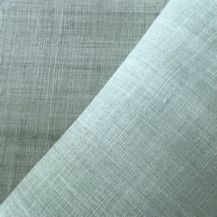 Mosi
Mosi
(ramie)
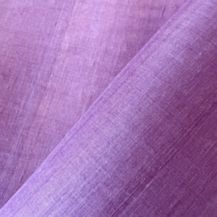 Oksa
Oksa
(thin silk)
 Nobang
Nobang
(thin silk)
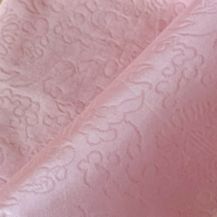 Sukgosa
Sukgosa
(thin silk
with patterns)
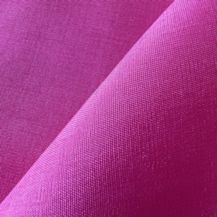 Myeongju
Myeongju
(thick silk)
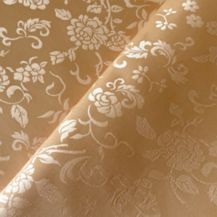 Yangdan
Yangdan
(thick silk
with patterns)
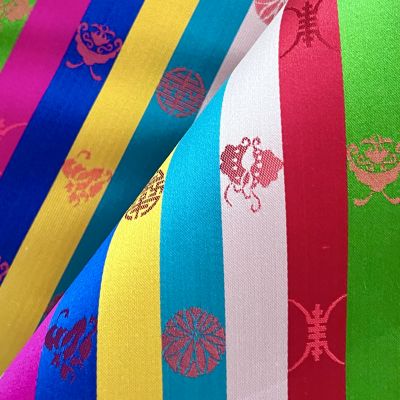 Saekdong silk
Saekdong silk
(thick silk with
colourful stripes)
The following are some examples.
I offer such kind of fabrics at my events.
 Mosi
Mosi(ramie)
This Korean ramie fabric is cool to the touch,
and appreciated for its unique transparency and stiffness.
Its fibers are extracted from the stalks of the ramie plant
of the nettle family.
It can be used for one or two layered bojagi.
It is is a beginner friendly fabric.
 Oksa
Oksa
(thin silk)
This plain Korean thin silk fabric is appreciated for its delicate transparency and stiffness.
It is woven from silk threads produced by two or more silkworms sharing a single cocoon.
The varying thickness of the thread creates a unique weave and texture.
It can be used for one or two layered bojagi.
It is is a beginner friendly fabric.
 Nobang
Nobang
(thin silk)
This Korean silk organza is thinner than oksa,
has great transparency, a delicate appearance, and characteristic stiffness.
It can be used for one or two layered bojagi.
 Sukgosa
Sukgosa
(thin silk
with patterns)
This patterned Korean thin silk fabric
features traditional patterns that bring good fortune and prosperity,
and is appreciated for its transparency.
It can be used for one or two layered bojagi.
 Myeongju
Myeongju
(thick silk)
This plain Korean thick silk fabric
is soft, has a unique glossy look, and feels very smooth to the touch.
It has no transparency, and is used for two layered bojagi.
 Yangdan
Yangdan
(thick silk
with patterns)
As a dan subcategory, this patterned Korean thick fabric
is created by satin weave, usually from silk.
It features traditional patterns that bring good fortune and prosperity,
and it is appreciated for its luxurious look.
It has no transparency, and is used for two layered bojagi.
 Saekdong silk
Saekdong silk
(thick silk with
colourful stripes)
Saekdong, colourful stripes, fabric is inspired by
the ancient philosophical concept of yin-yang and the five elements.
People have believed that this colour combination wards off evil spirits and
attracts good fortune. It has been used from the Goryeo Dynasty period (918-1392) for hanbok,
and especially for children's hanbok.
Why are some kinds of Korean silk such as oksa stiff to the touch?
This is because they are woven with raw silk yarns reeled from cocoons without removing the sericin. On the other hand, some kinds of Korean silk such as myeongju are smooth. This is because people remove the sericin from silk yarns to improve the sheen and texture.
This is because they are woven with raw silk yarns reeled from cocoons without removing the sericin. On the other hand, some kinds of Korean silk such as myeongju are smooth. This is because people remove the sericin from silk yarns to improve the sheen and texture.